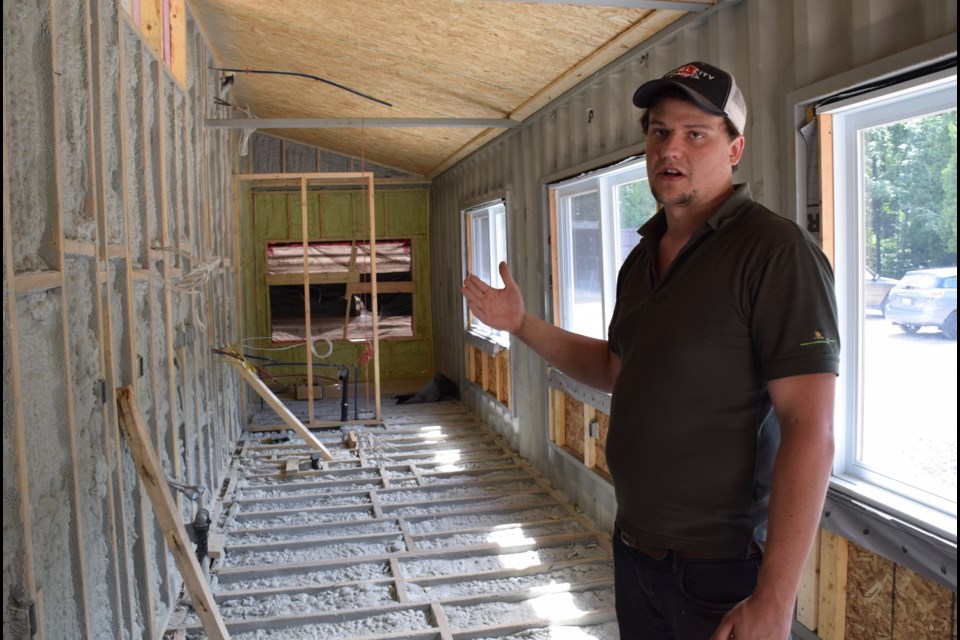The average price of a home in Guelph is now about $385,500, way out of reach for most people Josh Smith’s age. That’s why the 29-year-old Guelph dreamer is building a home that will cost about $65,000 to buy when it’s done.
On a piece of rural land owned by a friend’s family, south of Guelph and nestled in cedars, Smith is making progress on a prototype container home. It’s not what would be called a tiny home by the standards of tiny home devotees, but at just 320 square foot it is very small compared to some of the mansions going up in nearby subdivisions.
Smith is an enterprising young man. About five years ago he bought a rundown condominium, fixed it up and sold it for a nice profit. He said he took that money and went looking for a piece of land north of Guelph. He wanted a reasonably priced property to build on or move a house on to.
“I found affordable land,” he said. “But I couldn’t really afford to put a house on it. A container home was something I could afford.”
He didn’t buy the land. Instead, he began researching homes build from repurposed shipping containers. The idea of using the steel containers as the shell of a home has been around for many years, but a commercial venue for the product hasn’t been tried here. Smith is going to test the market.
He bought a single container from Giant Container Services in the Toronto area, a $2,400 purchase, with another $400 delivery fee on top of that. And he started transforming it into a living space, a bit at a time. He cut the top off, cut the window holes out, put a slanted roof on it, and is nearly finished framing and insulating the interior of what he describes as a loft-type dwelling.
Both the floor and walls inside will be finished with hardwood. While the structure is supported with steel cross beams, the interior will also incorporate 150-year-old barn beams in the design.
A partner in the project is an experienced furniture maker. There will be a tasteful pull-down table and built-in couch, and a tiny bedroom with a bed and the option for bunk beds.
The house will be wired for the electrical grid, and ready for municipal water hook up. But it will also have the option to be completely off-grid, he said.
When it’s complete, Smith will see if there’s a market in the region for a container home that can be moved to a piece of property. The structures don’t require a basement, but a slab or pier-style foundation will suffice. He added that the further out from Guelph one gets, especially going north, the cheaper land becomes.
“I think it is more for younger people,” he said. “Older people are used to what they have. They like bigger homes. Younger people are used to change, they’re flexible, and they like the idea of a small carbon footprint. They believe in living within their means. For them, bigger is not better.”
The Guelph housing market is highly inflated, Smith said, and that is making it impossible for young people to own a home.
“Young people can’t even afford to move out of their parent’s home,” he said.
His container who will be toasty warm in the winter, cool in the summer due to the thick, spray-on insulation, and comfortable for two people. Any more occupants than that and the place might get crowded. It is expandable, if need be.
To inquire about Smith’s container home, call him a 519-837-7449. Check out his plans and progress at www.loftinthewoods.wordpress.com, or at www.instagram.com/loftinthewoods1/.
